
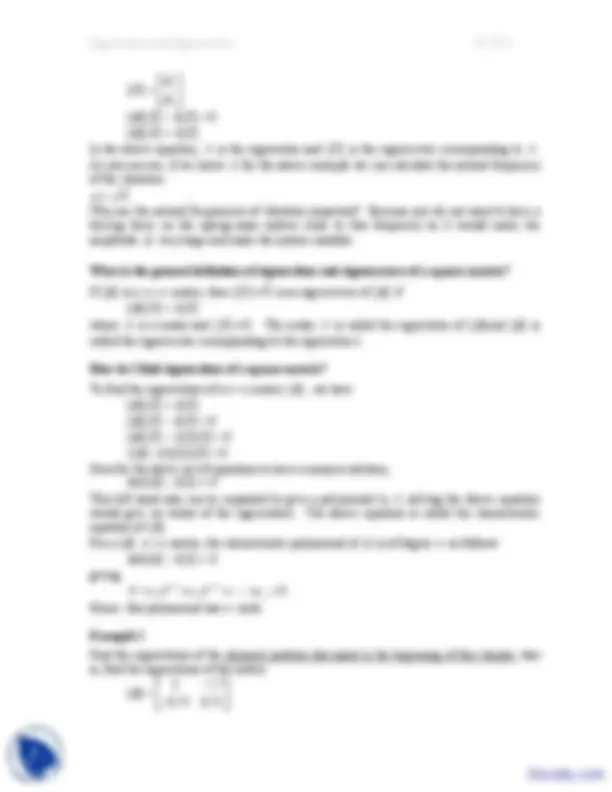
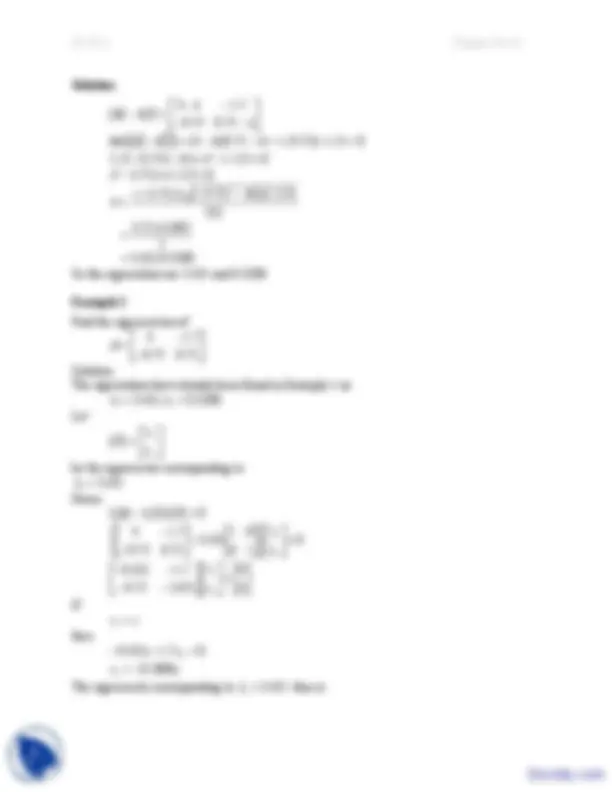
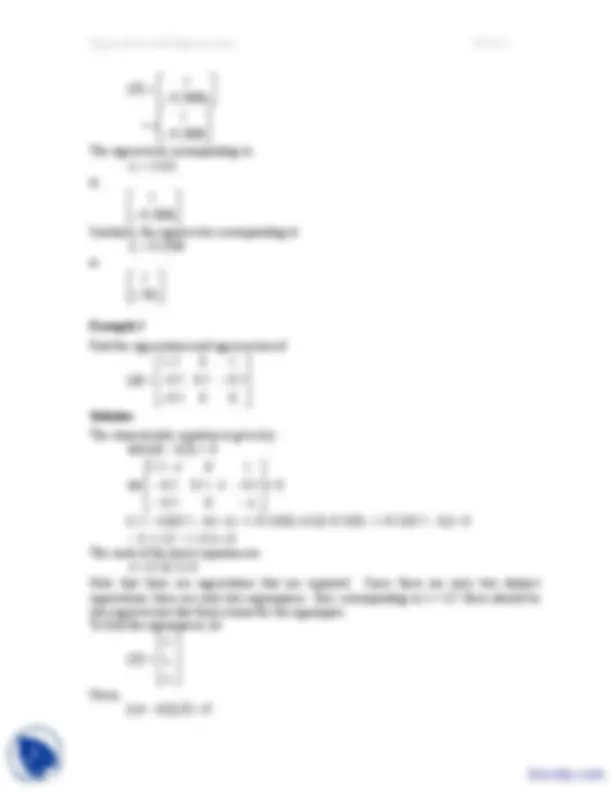
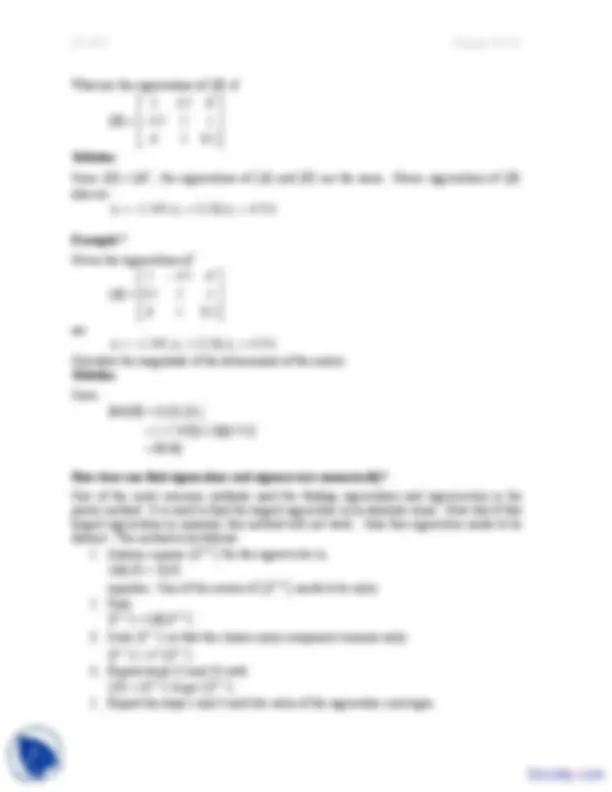
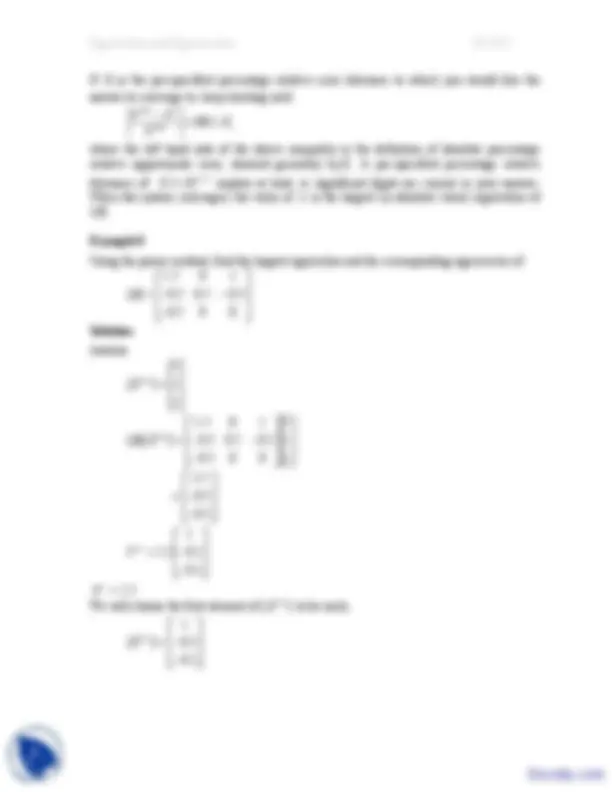
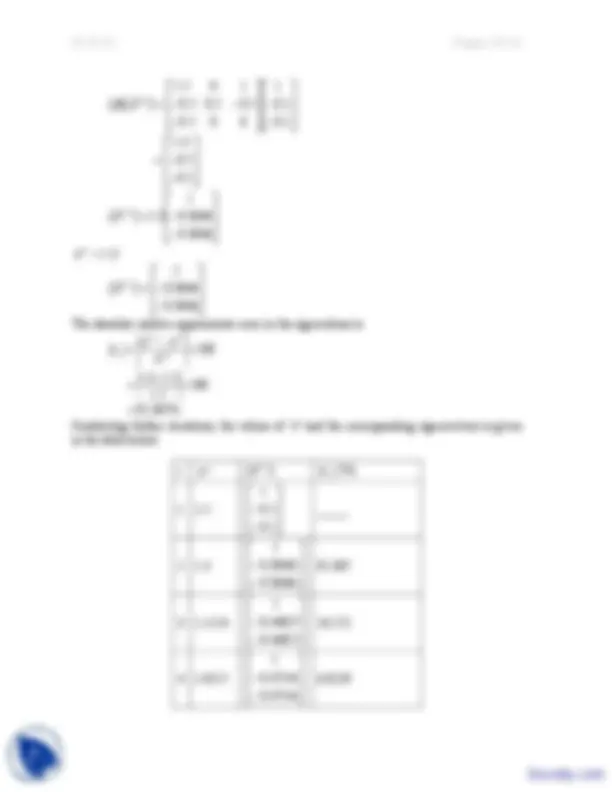


Study with the several resources on Docsity

Earn points by helping other students or get them with a premium plan


Prepare for your exams
Study with the several resources on Docsity

Earn points to download
Earn points by helping other students or get them with a premium plan
Community
Ask the community for help and clear up your study doubts
Discover the best universities in your country according to Docsity users
Free resources
Download our free guides on studying techniques, anxiety management strategies, and thesis advice from Docsity tutors
Main Points are: Eigenvalues and Eigenvectors, Application of Eigenvalues, Spring-Mass System, Vibration Theory, Amplitude of Vibration, Frequency of Vibration, Phase Shift, Natural Frequency, Characteristic Equation Eigenvalues and Eigenvectors, Application of Eigenvalues, Spring-Mass System, Vibration Theory, Amplitude of Vibration, Frequency of Vibration, Phase Shift, Natural Frequency, Characteristic Equation Main points are: Direct Method of Interpolation, Discrete Points, Extrapola
Typology: Exams
1 / 11

This page cannot be seen from the preview
Don't miss anything!







After reading this chapter, you should be able to:
Assume each of the two mass-displacements to be denoted by x 1 and x 2 , and let us assume each spring has the same spring constant k. Then by applying Newton’s 2nd^ and 3 rd^ law of motion to develop a force-balance for each mass we have m 1 (^) ddt^2 x 21 kx 1 k ( x 2 x 1 ) m 2 (^) ddt^2 x 22 k ( x 2 x 1 )
x 1 x 2
m 1 m 2
k k
04.10.2 Chapter 04.
Rewriting the equations, we have m 1 ddt^2 x 21 k ( 2 x 1 x 2 ) 0 m 2 ddt^2 x 22 k ( x 1 x 2 ) 0 Let m 1 10 , m 2 20 , k 15
20 ddt^2 x 22 15 ( x 1 x 2 ) 0 From vibration theory, the solutions can be of the form
where A i = amplitude of the vibration of mass i , = frequency of vibration, 0 = phase shift. then
Substituting xi and d dt^^2 x 2 i^ in equations,
gives
or
In matrix form, these equations can be rewritten as 0. 75 ^3 (^21) .^50. 75 21 00
2 A
10 ddt^2 x 21 15 ( 2 x 1 x 2 ) 0
04.10.4 Chapter 04.
Solution
So the eigenvalues are 3.421 and 0.3288. Example 2 Find the eigenvectors of A (^) 03. 75 0.^175.^5 Solution The eigenvalues have already been found in Example 1 as
Let [ X ] xx 21 be the eigenvector corresponding to
Hence
^03.^75 ^0.^175.^5 ^3.^421 ^0110 ^ xx^12 ^0 ^00 ..^42175 21. 671.^5 xx 21 00 If x 1 s then
x s
s x
2
2
Eigenvalues and Eigenvectors 04.10.
[ X ] (^) 0. 2808 s s s 0. 28081 The eigenvector corresponding to
is 0.^12808 Similarly, the eigenvector corresponding to
is 1. 7811
Example 3 Find the eigenvalues and eigenvectors of
Solution The characteristic equation is given by
det
The roots of the above equation are
Note that there are eigenvalues that are repeated. Since there are only two distinct eigenvalues, there are only two eigenspaces. But, corresponding to = 0.5 there should be two eigenvectors that form a basis for the eigenspace.To find the eigenspaces, let
3
2
1 [ ] x
x
x X
Given
Eigenvalues and Eigenvectors 04.10.
What are some of the theorems of eigenvalues and eigenvectors? Theorem 1: If [ A ] is a n n triangular matrix – upper triangular, lower triangular or diagonal, the eigenvalues of [ A ] are the diagonal entries of [ A ].
Theorem 3: [ A ] and [ A ] Thave the same eigenvalues. Theorem 4: Eigenvalues of a symmetric matrix are real. Theorem 5: Eigenvectors of a symmetric matrix are orthogonal, but only for distinct eigenvalues. Theorem 6: det( A ) is the product of the absolute values of the eigenvalues of [ A ]^.
Example 4 What are the eigenvalues of
Solution Since the matrix [ A ] is a lower triangular matrix, the eigenvalues of [ A ] are the diagonal elements of [ A ]. The eigenvalues are
Example 5 One of the eigenvalues of
is zero. Is [ A ] invertible? Solution
Example 6 Given the eigenvalues of
are
04.10.8 Chapter 04.
What are the eigenvalues of [ B ] if
Solution Since [ B ] [ A ] T , the eigenvalues of [ A ] and [ B ] are the same. Hence eigenvalues of [ B ] also are
Example 7 Given the eigenvalues of
are
Calculate the magnitude of the determinant of the matrix. Solution Since
How does one find eigenvalues and eigenvectors numerically? One of the most common methods used for finding eigenvalues and eigenvectors is the power method. It is used to find the largest eigenvalue in an absolute sense. Note that if this largest eigenvalues is repeated, this method will not work. Also this eigenvalue needs to be distinct. The method is as follows:
equation. One of the entries of [ X (^0 )]needs to be unity.
04.10.10 Chapter 04.
The absolute relative approximate error in the eigenvalues is
in the table below
Eigenvalues and Eigenvectors 04.10.
and the corresponding eigenvector is
Key Terms: Eigenvalue Eigenvectors Power method